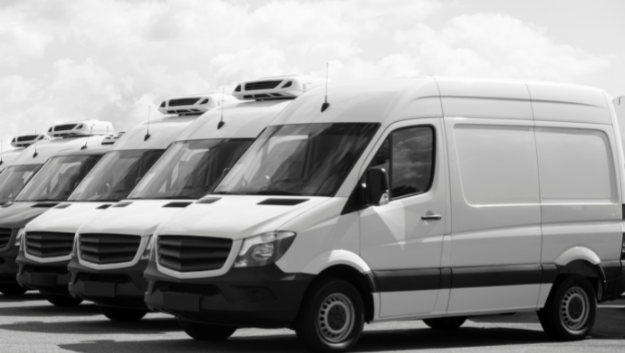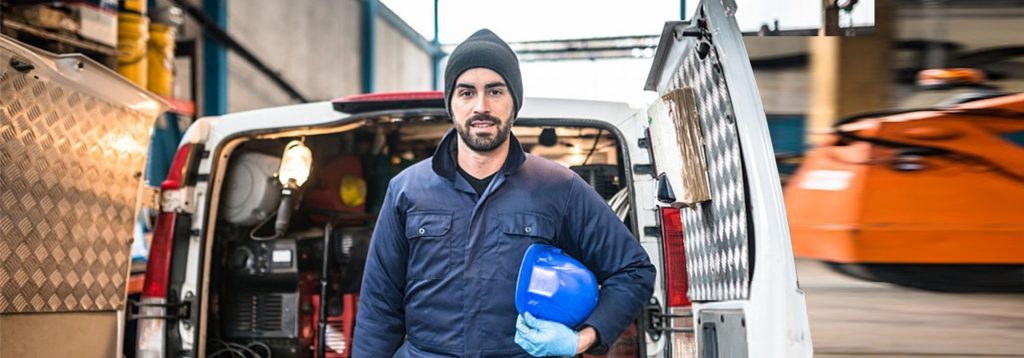Understanding Commercial Vans
Understanding the difference between light commercial vehicles (LCVs) and heavy commercial vehicles (HCVs) is key for Irish enterprises looking to make informed decisions. This guide is dedicated to helping you navigate the world of commercial vans in Ireland, ensuring you choose the right vehicle for your business needs.
Commercial vans in Ireland are categorised based on their size, weight, and functionality. We’ll explore the nuances between LCVs and HCVs, two categories that are fundamental to the commercial vehicle sector in Ireland.
What is a Light Commercial Vehicle (LCV)?
LCVs, defined as vehicles with a gross vehicle weight (GVW) of up to 3.5 tonnes, are a popular choice for many Irish businesses due to their versatility and efficiency.

Versatile and efficient, Light Commercial Vehicles (LCVs) with a gross vehicle weight of up to 3.5 tonnes are the preferred choice for numerous Irish businesses.
Characteristics of LCVs:
- Size: Ideal for navigating Ireland’s diverse urban and rural landscapes, LCVs are a practical choice for businesses requiring agility and ease of parking.
- Fuel Efficiency: With fuel efficiency being a priority, LCVs are a cost-effective option for Irish businesses, keeping running costs low.
- Payload and Capacity: Despite their smaller size, LCVs offer ample cargo space, perfect for various types of deliveries and services across Ireland.
- Popular Models: Models like the Ford Transit Connect and Volkswagen Caddy are common sights on Irish roads.
What is a Heavy Commercial Vehicle (HCVs)?
Characteristics of HCVs:
-
Payload and Towing Capacity: Essential for heavy-duty tasks, HCVs are the workhorses of the Irish commercial sector, capable of handling significant loads.
-
Engine Power and Durability: Built to endure long distances, HCVs are a reliable choice for extensive operations across Ireland.
-
Operational Costs: While offering greater capacity, HCVs come with higher fuel consumption and maintenance needs.
-
Renowned Models: Vehicles like the Mercedes-Benz Actros are a testament to the power and reliability needed in the Irish commercial sector.
Understanding Driving Licence Categories for Vans in Ireland
The type of driving licence required depends on the vehicle’s size and weight. Here’s a breakdown of the licence categories relevant to driving vans:
-
Category B Licence: This is the standard driving licence most people obtain. It allows you to drive vehicles up to 3,500kg Maximum Authorised Mass (MAM) with up to 8 passenger seats. Most light commercial vehicles (LCVs) fall under this category. If you’re driving a small van for deliveries or services, your standard car licence is typically sufficient.
-
Category C1 Licence: If you need to operate a vehicle that weighs between 3,500kg and 7,500kg MAM, you’ll require a Category C1 licence. This is often necessary for larger LCVs or smaller models of HCVs. It’s a step up from the standard car licence and requires additional testing and certification.
-
Category C Licence: For driving heavy commercial vehicles (HCVs) over 7,500kg, a Category C licence is mandatory. This is essential for drivers of large goods vehicles like heavy box trucks and lorries. Obtaining this licence involves more comprehensive training and testing, focusing on the skills needed to safely operate larger vehicles.
-
Additional Certifications: Depending on the vehicle and its use, additional qualifications like a Certificate of Professional Competence (CPC) may be required. This is especially relevant for drivers who transport goods or passengers for hire or reward.

The type of driving licence required depends on the vehicle’s size and weight
Making the Right Choice for Your Business
Selecting the appropriate commercial van in Ireland involves considering your business type, operating environment, budget, and regulatory compliance. Whether it’s an LCV or an HCV, the right choice can significantly impact your business’s efficiency.
Factors to Consider:
-
Business Needs: Assess the nature of your goods, the frequency of deliveries, and the typical distances you’ll be covering.
-
Operating Costs: Consider fuel efficiency, maintenance expenses, and insurance costs, which can vary significantly between LCVs and HCVs.
-
Environmental Impact: With increasing focus on sustainability, consider the environmental footprint of your chosen vehicle, especially in urban areas.
Choosing the right commercial van – be it a light or heavy commercial vehicle – is crucial for the success and growth of your business.
Securing the right insurance for your commercial van in Ireland is as crucial as choosing the vehicle itself. KennCo Insurance offers coverage on commercial vans in Ireland up to two tonnes if you’re aged between 21 and 69. Contact us today for a quick quote and reliable cover that suits you.
